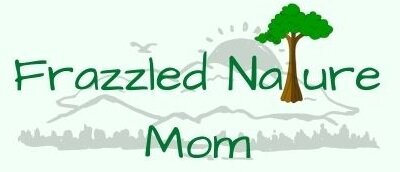How are Volcanoes Made?
We are studying earth science this year, and my son is really enjoying the topics so far (we are following the Blossom and Root Year 1 Science Curriculum). We have talked about the structure of the earth, plate tectonics, earthquakes, and more already. However, he has been eagerly (and impatiently) awaiting volcano week, and a few days ago he said “Mommy, I just have to know! How are volcanoes made?”. Lucky for him, his wait was over, and we dived into the world of volcanoes this week.
The Structure of the Earth
Before you can talk about how a volcano is made, you need to understand the structure of the Earth. To briefly summarize, the Earth is made of 4 main layers: the really hot inner core of solid iron and nickel (we are talking as hot as the surface of the sun!), the molten outer core (again, mainly iron and nickel), the mantle (which is sometimes split into the lower mantle and the upper mantle), and the crust (what we are standing on). While incredible pressure keeps the lower mantle solid, the upper mantle is less solid and flows slowly (think warm, gooey caramel). This causes the fractured tectonic plates of the crust to constantly move around. While we generally don’t feel this movement, it can cause incredible change to the Earth’s surface over time through the pushing together (convergent), pulling apart (divergent), and sliding (transform) of two plates.
Liquid Hot Magma
Pardon my Austin Powers reference, it was a little hard to pass up (Dr. Evil’s voice encouraged!). Most volcanoes erupt either through rifts as plates pull away from each other or along subduction zones where plates are crashing into each other. Since most of the mantle is molten rock (magma), disturbances along the plate boundaries can cause cracks and pathways for the magma to travel through. Along rifts (when plates pull apart), magma can seep through the crack and reach the surface, creating new crust as the plates pull apart. This generally happens along the ocean floor but can also be seen in Iceland.
When two plates collide and form a subduction zone (when one plate moves under the other) the plate that sinks below carries water and minerals along with it, which heats up and rises through the upper plate. This then makes some of the rock melt and collect below the surface in magma chambers. As pressure builds up, the magma in these chambers eventually erupts through the surface becoming lava. It can either form island arc volcanoes if it occurs in the ocean or volcanic mountains on land.
Volcano Project from the National Geographic Earth Science Kit
Hot Spots
Unlike volcanoes that form at plate boundaries, hot spot volcanoes generally occur somewhere in the middle of a tectonic plate. They are formed when heat rises from deep within the earth’s mantle, melting rock along the way and eventually pushing through cracks in the earth’s crust. As the plate above the hot spot moves, the hot spot says put. Without a magma source, the volcano eventually cools and becomes extinct as it moves farther from the hot spot. Meanwhile, the hot spot creates new volcanoes on the tectonic plate. You can think of the plate like a conveyer belt, constantly moving and taking the islands with them while the hot spot is stationary below. A great example of this can be seen with the Hawaiian Islands, which are located on the Pacific Plate. The island of Hawaii is the youngest and most active volcano in the chain since it sits on top of the hot spot. As the plates move, the Kilauea and Mauna Loa volcanoes on the island of Hawaii will eventually cool and become extinct as they move away from the magma source of the hot spot and new islands may form above the hot spot as the Pacific Plate continues to move.
From Google Earth
Resources
Looking to make this info more kid-friendly or dive deeper into the topic of volcanoes? If your kiddo is like mine, seeing a visual representation of a topic helps him to better understand and grasp the concepts. Check out these resources to help your kiddos understand how volcanoes are formed:
· Videos
SciShow Kids: All About Volcanoes From my son’s favorite YouTube channel.
Zero One: A Day in Pompeii This is an intense depiction of the eruption of Mount Vesuvius on August 24, 79 CE that buried Pompeii
· Books
Super Earth Encyclopedia from DK Smithsonian
Lonely Planet: The Big Earth Book By Mark Brake
The Magic School Bus: Voyage of the Volcano By Judith Stamper
· Curriculum and Kits
Blossom and Root Year 1 Science: Wonders of the Earth and Sky
National Geographic Earth Science Kit Comes with various projects including erupting volcanoes, growing crystals, geologic digging, etc.
Do you or your kiddos have questions to add to our “Pillar of Curiosity”? Let us know in the comments below! You may find answers in future articles!



